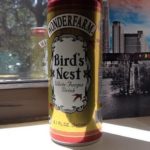 Part of my job as a speech-language pathologist is to provide home-based speech language therapy. On paper, this is merely a location. In reality, I consider this an honor and privilege.
Part of my job as a speech-language pathologist is to provide home-based speech language therapy. On paper, this is merely a location. In reality, I consider this an honor and privilege.
Regardless of size, cleanliness and number of occupants, a home is a place of value—both monetary and emotional. At this time, my home visits are with my Vietnamese clients. As I walk through the doors, I quickly remove my shoes and place them alongside their fellow shoe-companions. This tradition facilitates cleanliness and respect for others’ homes. I am greeted by enthusiasm and gratitude, “Chao Cô Phương!” I am ushered into the house to escape the harsh weather elements (e.g., Texas sun, Texas wind, Texas “cold”, Texas humidity), and thus my therapy time begins.
Compassion and empathy are what families crave.
During this last year, I have been giving a great deal of thought to my families—the people I serve during my work week. I often ask my parents what qualities they find the most important in speech-language pathologists, and I find myself hearing words like “compassion” and “empathy” (for the child and family). Once in a blue moon, a parent will say “competency”; however, I find this response rare. Most adjectives lend themselves to how the SLP treats the child, family and home. Our knowledge of speech and language are usually secondary to the heart-skills we need to convey.
Food can be used to represent gratitude and love.
The last few months have also brought on a myriad of cuisine offerings. You see, food plays a vital role in many cultures, and this is an especially important component of the Vietnamese culture. Food is used to represent gratitude and love. Hours are spent cooking a homemade bone-based broth that is usually consumed in mere minutes. “I love you’s” are, at times, replaced by dishes containing lemongrass, mint leaves and fish sauce. Food is the love language, and as service providers, I have a better understanding of the therapeutic gifts we bring in the home and the appreciation given to us via our palettes. Though not the sole indicator of effective home-based speech language therapy, my waist line is a testament to the gratefulness of my families. Here is an examples of my SLP diet:
Bird’s Nest: “A drink derived from birds’ nests containing the spittle of their young. Consuming this product will yield medicinal effects such as moisturized skin and a limber mind.”
I understand that there are many dietary needs presented to us on a daily basis through our own personal food criteria, social media and educational resources: clean eating, carb-free, low-fat, organic-only, etc. And, to be honest, I try to adhere to a food system that does not necessarily adhere to my own culture’s cuisine a majority of the time. With that being said, I will be the first to say that if a family gives you food out of appreciativeness, (try your best to) consume it, even if it contains bird spittle. Know that the dish was selected with you in mind.
Our families share their culture with us to convey their gratitude.
Recently, I showed up to a home to do speech-language therapy with two brothers. Bà nội, Grandma, let me in. The therapy session started, and within minutes, a plate full of bánh cuốn, thin sheets of steamed fermented rice filled with salty slices of pork and minced shallots, appeared on the table. The meal was accompanied by a chilled, orange Crush and a jar of homemade fish sauce. I had just eaten lunch and was not particularly hungry. Nonetheless, I began eating while reading a book and doing story grammar raps with my client. And, I drank orange Crush for the first time in over two decades.
So, here’s to a plate full of effective home-based speech language therapy, a side-dish of compassion and a glass of cultural regard to wash it all down. Bon appétit.
Cultural Diversity: Relevance to Speech-Language Pathology and Audiology


 Part of my job as a speech-language pathologist is to provide home-based speech language therapy. On paper, this is merely a location. In reality, I consider this an honor and privilege.
Part of my job as a speech-language pathologist is to provide home-based speech language therapy. On paper, this is merely a location. In reality, I consider this an honor and privilege.





Looking for home based speech services for 4 y/o boy w autism in Edmond
Hi LeeAnn,
We suggest a few strategies for finding a speech-language pathologist who will complement your son and your family: ask current families who are seeing an SLP right now, look on the internet and read the reviews. As a mother, I know there are important considerations: insurance, availability, specific training (SLP knowledgeable in ABA, assistive technology, positive behavioral supports). We are also a fan of the Parent Companion–it is a site that supports parents and their efforts. It was created in Texas; however, the content is gold. Good luck in your endeavors.
Phuong